Honor Award
The Dignity of Restraint: A Historic Landscape Preservation Study for the University of North Carolina
Hoerr Schaudt Landscape Architects, Chicago
Client: University of North Carolina, Chapel Hill

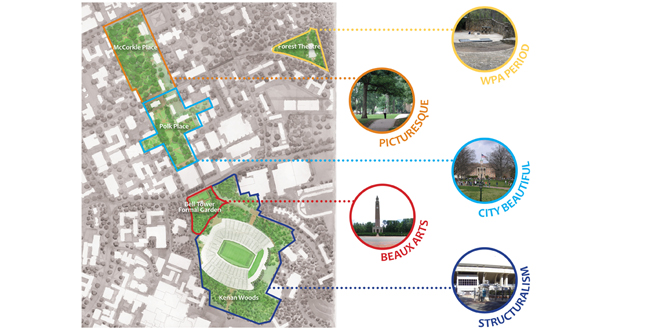 Close Me!
Close Me!UNC Historic Core: Five Eras
Download Hi-Res ImageImage: Hoerr Schaudt Landscape Architects
Image 2 of 15
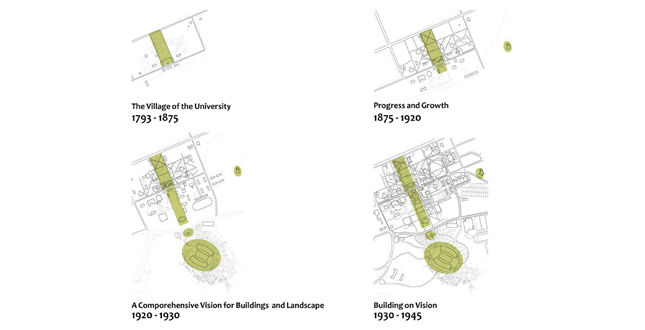 Close Me!
Close Me!UNC History: Evolution of a Landscape Legacy
Download Hi-Res ImageImage: Hoerr Schaudt Landscape Architects
Image 3 of 15
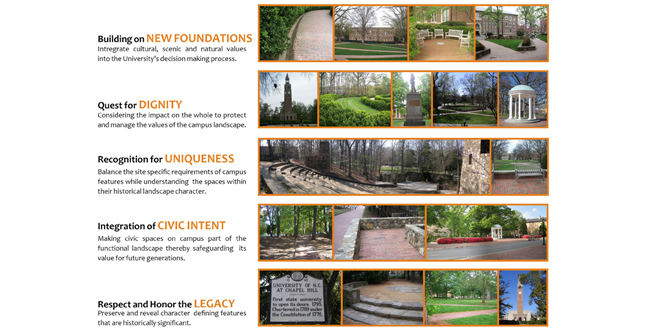 Close Me!
Close Me!Project Guiding Principles
Download Hi-Res ImageImage: Hoerr Schaudt Landscape Architects
Image 4 of 15
 Close Me!
Close Me!McCorkle Place: Summary of Recommendations
Download Hi-Res ImageImage: Hoerr Schaudt Landscape Architects
Image 5 of 15
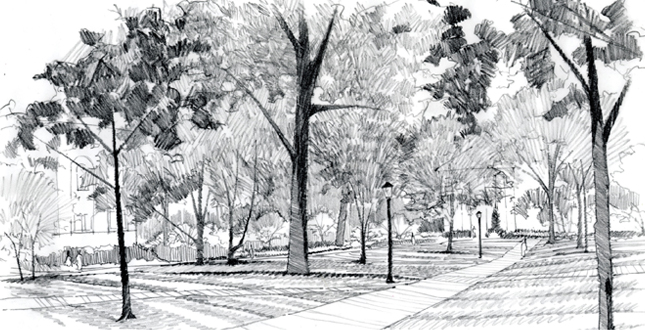 Close Me!
Close Me!McCorkle Place: Illustrated Recommendations
Download Hi-Res ImageImage: Hoerr Schaudt Landscape Architects
Image 6 of 15
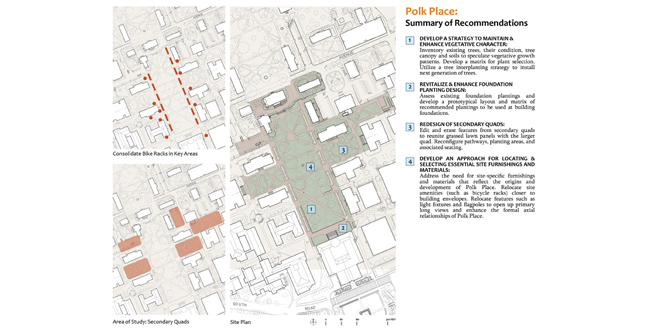 Close Me!
Close Me!Polk Place: Summary of Recommendations
Download Hi-Res ImageImage: Hoerr Schaudt Landscape Architects
Image 7 of 15
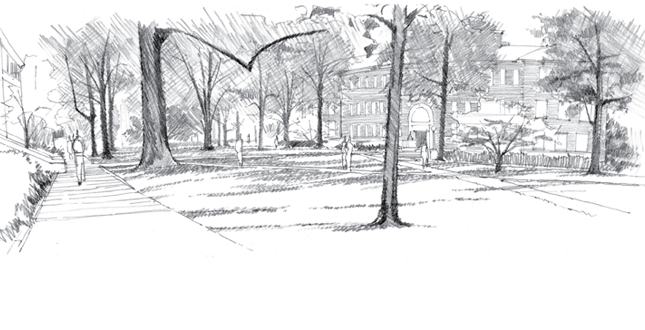 Close Me!
Close Me!Polk Place: Illustrated Recommendation
Download Hi-Res ImageImage: Hoerr Schaudt Landscape Architects
Image 8 of 15
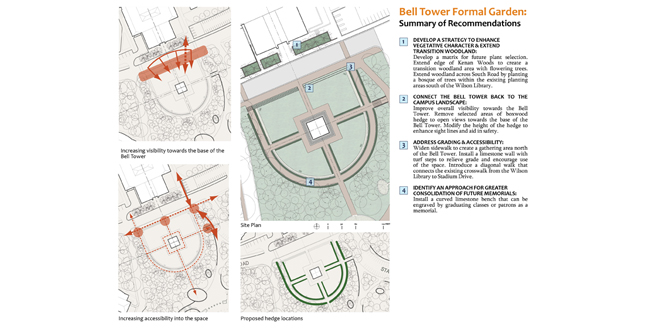 Close Me!
Close Me!Bell Tower Formal Garden: Summary of Recommendations
Download Hi-Res ImageImage: Hoerr Schaudt Landscape Architects
Image 9 of 15
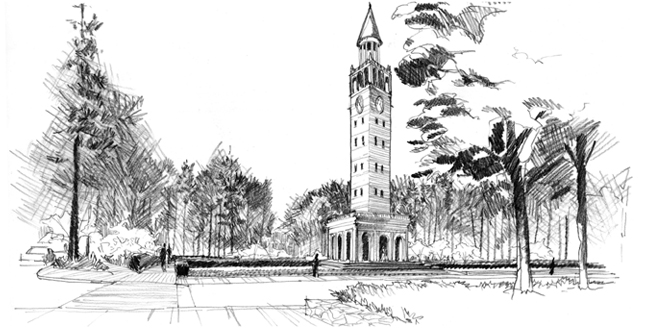 Close Me!
Close Me!Bell Tower Formal Garden: Illustrated Recommendation
Download Hi-Res ImageImage: Hoerr Schaudt Landscape Architects
Image 10 of 15
 Close Me!
Close Me!Kenan Woods: Summary of Recommendations
Download Hi-Res ImageImage: Hoerr Schaudt Landscape Architects
Image 11 of 15
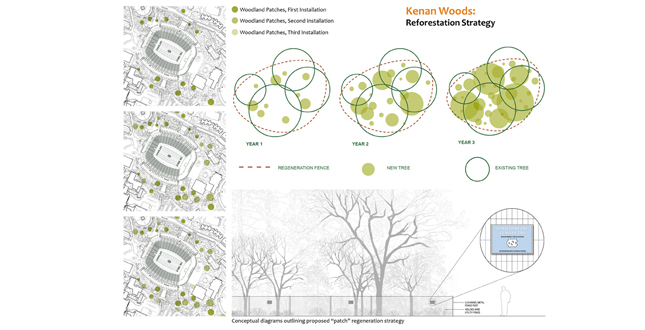 Close Me!
Close Me!Kenan Woods: Reforestation Strategy
Download Hi-Res ImageImage: Hoerr Schaudt Landscape Architects
Image 12 of 15
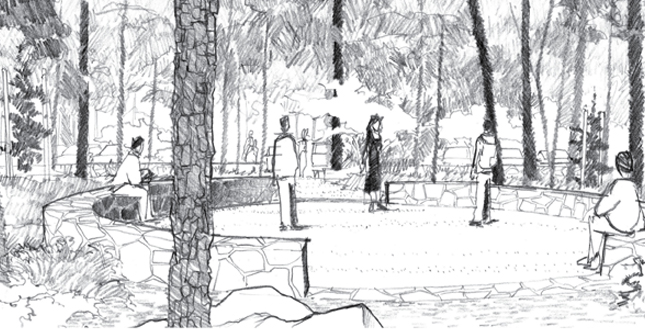 Close Me!
Close Me!Kenan Woods: Illustrated Recommendation
Download Hi-Res ImageImage: Hoerr Schaudt Landscape Architects
Image 13 of 15
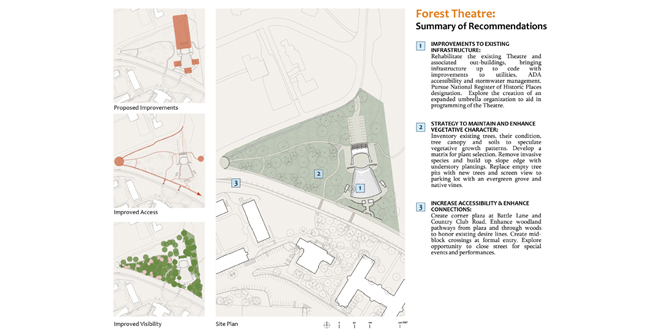 Close Me!
Close Me!Forest Theatre: Summary of Recommendations
Download Hi-Res ImageImage: Hoerr Schaudt Landscape Architects
Image 14 of 15
 Close Me!
Close Me!Forest Theatre: Illustrated Recommendation
Download Hi-Res ImageImage: Hoerr Schaudt Landscape Architects
Image 15 of 15
Project Statement
Remarkably, the oldest public university in the country has preserved an exceptional legacy of natural features and magnificent ancient trees within its campus. This planning study aims to enhance these attributes not by superimposing dramatic change, but by carefully revealing character-defining features and relationships that are historically, ecologically, and culturally significant within five designated sites. The proposed interventions are examples of the power of subtlety and restraint. By avoiding complete uniformity, the suggested strategies honor the depth of the campus's heritage even as they steward and guide long-term change.
Project Narrative
—2011 Professional Awards Jury
The Dignity of Restraint represents a first effort on the part of the University to document, analyze, and interpret the evolution of the designed landscape of the historic core of the UNC campus, which, though largely preserved by a series of concerned professors and administrators, was never guided by a landscape architect. In the face of recent and projected growth, the University sought to assess its campus more comprehensively.
This study developed a series of guiding principles to analyze five landmark landscapes, each of which represent a significant era of the campus's landscape history. To document the evolution of physical and cultural change over these time periods, while identifying significant surviving fabric from each, the design team examined the landscape through a series of cultural, natural and scenic 'lenses.' Five landmark landscapes: McCorkle Place, Polk Place, Forest Theatre, Kenan Stadium Morehead-Patterson Bell Tower Formal Garden, embody the unique character of campus and are the areas of detailed focus for this study. Each of these landscapes is significant in its own right and as part of a larger scenographic ensemble that collectively contribute to the UNC campus experience. Knitting together the whole in a symphonic, common language, elucidated by the detailed recommendations for five distinct sites within the University's historic core, this plan outlines strategies specific to each site, utilizing the guiding principles described below to reveal the historical, scenic, and botanical significance of this landmark campus.
The composition of the planning team was unusually broad in its expertise. Comprised of the campus historic preservationist, facilities and grounds staff, a landscape architect, a historic preservationist, a native plant specialist, a forester, a tree/soil consultant, and the university archivist, the team's close collaboration ensured that each 'lens' through which the five sites were evaluated (cultural, natural and scenic ) were represented by a knowledgeable advocate.
The study builds on a number of prior studies that were separately focused on expansion, stormwater management, environmental planning, landscape heritage and plant diversity. It is the first report to integrate earlier documentation and analysis through the lens of a shared value system — placing equal emphasis on cultural, natural, and scenic attributes of the campus landscape into a single document. The study was possible through a grant from the Getty Foundation Campus Heritage Program.
The impact of the study is significant and varied. Several projects on campus have been born: a tree guide titled "UNC's Noble Grove: A Walking Tour of Campus Trees" was developed to educate campus visitors on the University's noble tree landscape through maps, line drawings, and descriptive text. The Kenan Woods Forest Regeneration Project takes the primary recommendations offered in the Dignity of Restraint and puts them into action — developing a reforestation strategy that employs a step-by-step approach centered upon immediate and annual planting strategies, consistent maintenance, and soil amendment / analysis to ensure that the historic woodland character of Kenan Woods is maintained and enhanced into the future. Additionally, the design of a new memorial to former student Eve Carson, placed within Polk Place, follows recommendations in the plan to integrate dedications and memorials into the historic landscape. Finally, in 2010, the UNC library developed an exhibit based on the study and tree guide called "Noble Trees: Traveled Paths: The Carolina Landscape Since 1793."
This plan is a model for future historic campus planning efforts that seek to evaluate the significance of historic landscapes from multiple perspectives — cultural, aesthetic and naturalistic. It is also an example of how to assess the significance of a campus from the perspective of its most dominant yet under-appreciated element — its landscape.
Five Guiding Principles
- Building on New Foundations — Integrate cultural, scenic, and natural values into the University's decision making process.
- Quest for Dignity — Consider the impact on the whole to safeguard and manage the cultural, scenic and natural values of the campus landscape.
- Recognition for the Uniqueness — Balance the site-specific design requirements of iconic campus landscape features while understanding the spaces within their historical landscape context.
- Integration of Civic Intent — Retain and honor both the civic ambition of patronage and insure its careful integration into the larger cultural landscape
- Respect and Honor the Legacy — Preserve and reveal character-defining features that are historically significant while accommodating change
Project Resources
Lead Designer: Hoerr Schaudt Landscape Architects
Peter Lindsay Schaudt, FASLA, FAAR
Historical Preservation: The Cultural Landscape Foundation
Charles Birnbaum, FASLA FAAR
Native Plant Specialist: University of Georgia
Dr. Michael Dirr, Hon. ASLA
Tree and Soil Consultant: Urban Trees + Soils
Jim Urban, FASLA
Local Arborist/Forester: F. A. Bartlett Tree Expert Company
Bryan Lowrrence
Local Landscape Architect: Cole Jenest & Stone
Brian Jenest, ASLA






